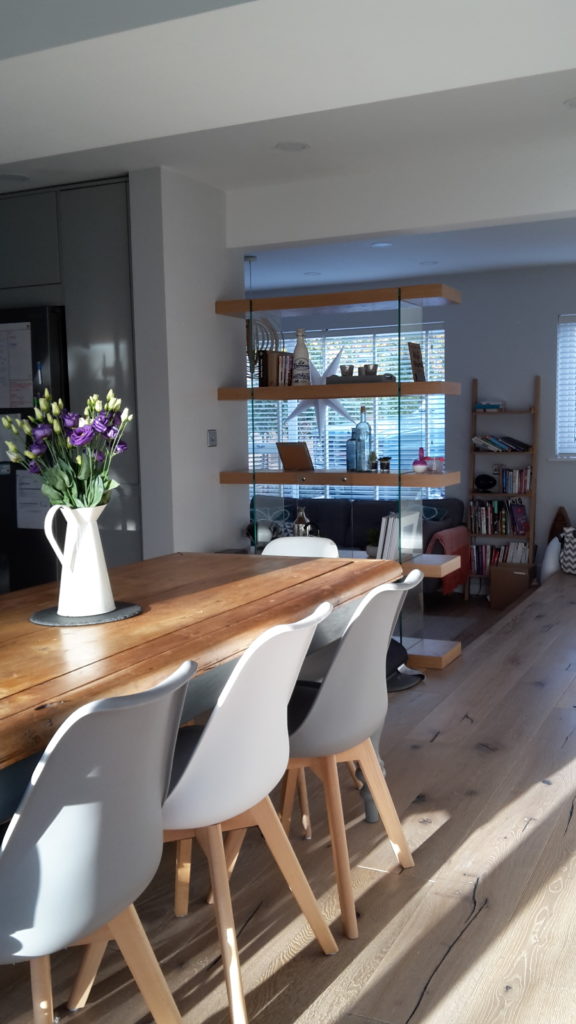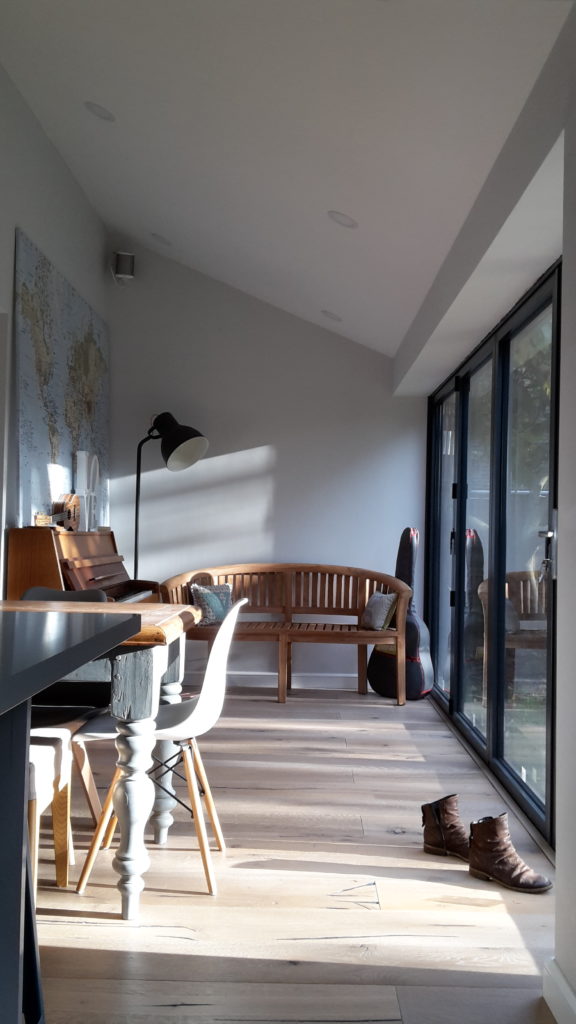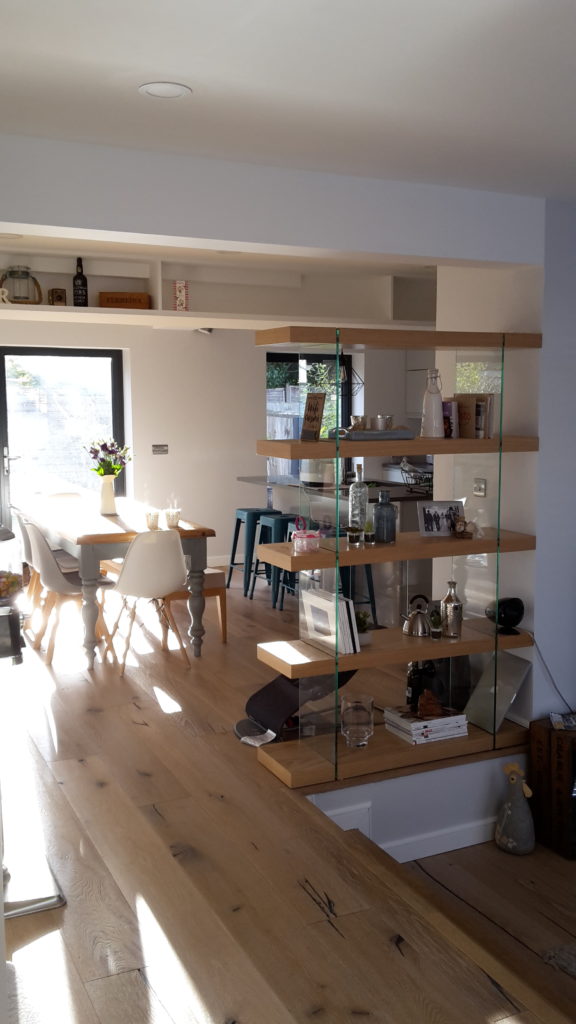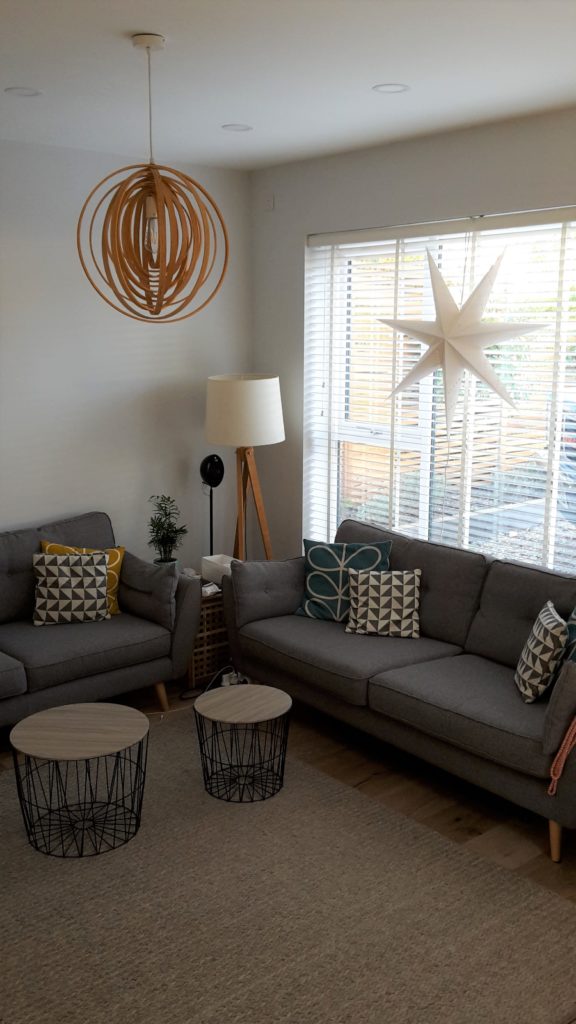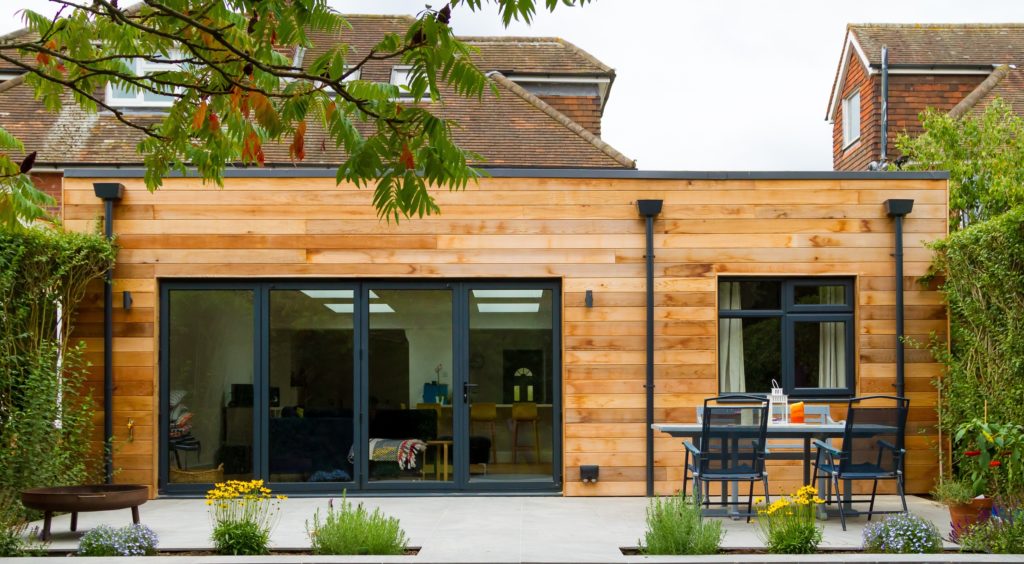
A familiar story…
Living in a house subjected to piecemeal development over the years, the key consideration for this family was in unlocking the back of the house to once again connect with the garden. It’s a common problem where properties have already been developed, and for this project in particular the requirement to retain one of the existing extensions brought with it an added challenge, but one that ultimately gave it its character.
Three years ago I was approached by a lovely family of four, who came to me with their tired conservatory that doubled as a playroom, and in many ways blocked their access to the garden. It was a space rarely used, always too hot or too cold, a bit of a no man’s land, very much in the way. For them it required a concerted effort to get out to the garden; especially challenging with kids.

Tired and piecemeal development 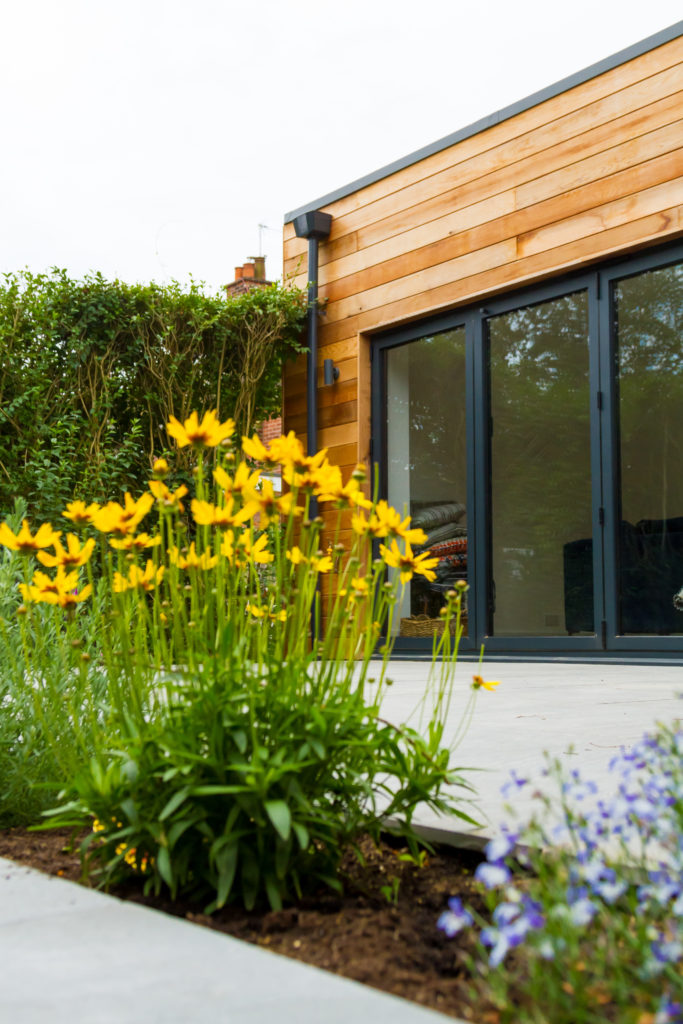
Simple form and contrasting materials
A plan for contemporary living
Their vision was to create a versatile family room, open plan to the kitchen and dining area, and to re-establish the link between the house and the garden. It would be a space for hanging out together, for music, for kids’ homework and for getting outdoors again. Adding a significant amount of floor space to their 1930’s home, the new extension would infill the gap alongside the existing extension that had been tacked on 20 years previous. This, already containing a ground floor bedroom and bathroom, too valuable for family visitors to do away with – so it had to be retained and worked around.

Sketch plan layout 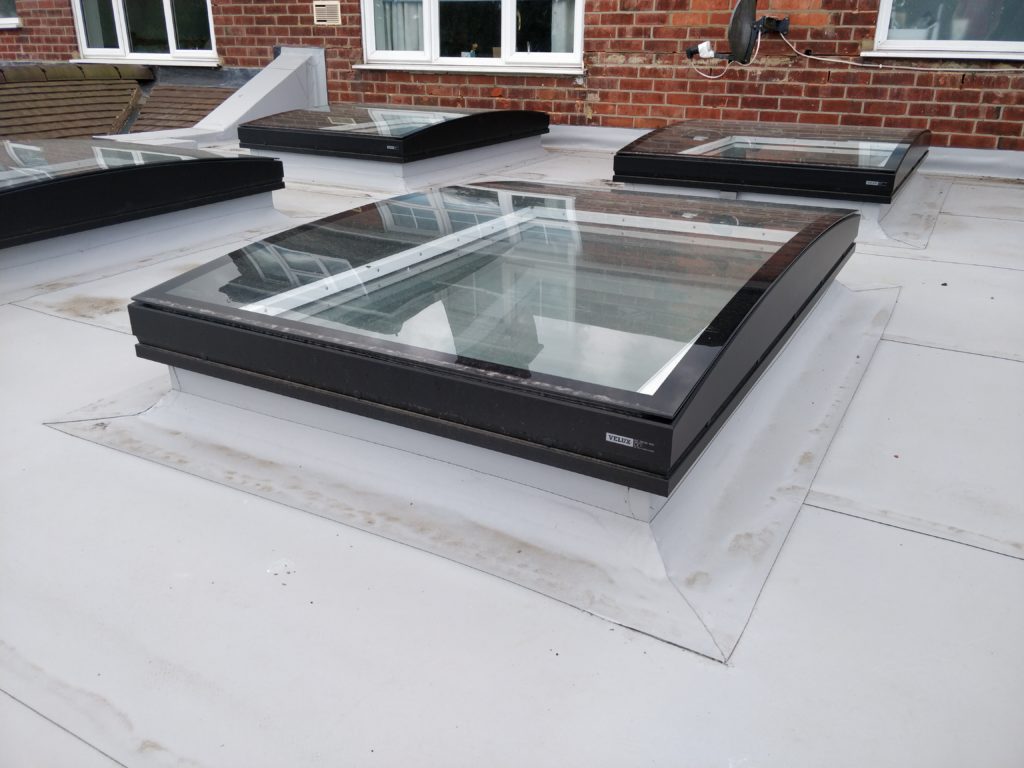
Curved glass flat rooflights 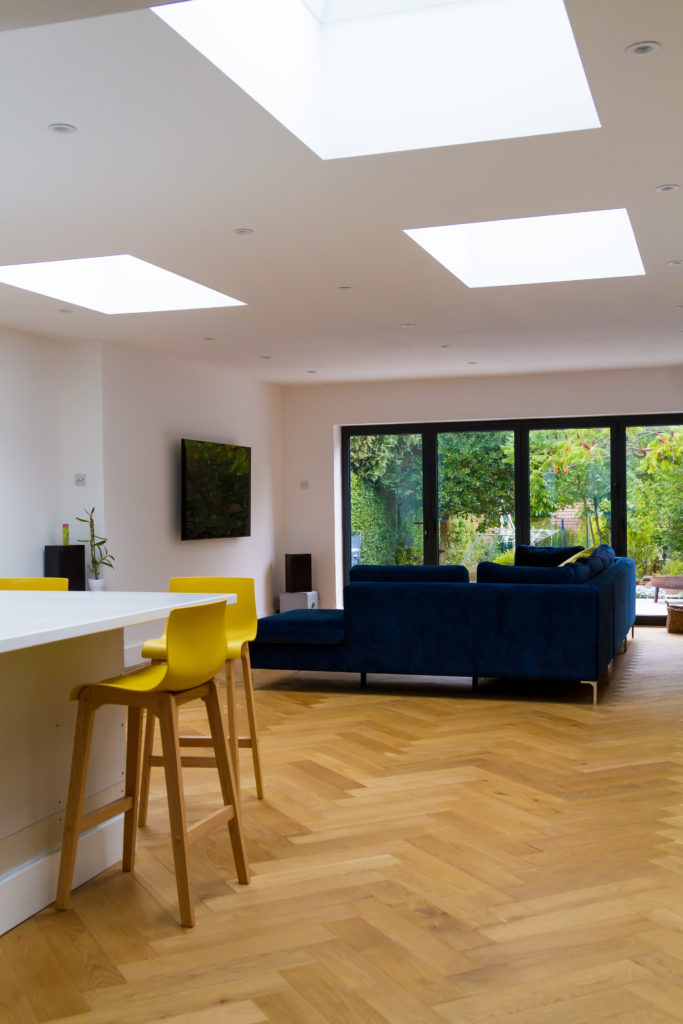
Versatile bright family room
Delivering through design
The proposals set out to reconnect the house and garden and re-worked the circulation to the spare room, streamlining the kitchen layout. The island, which is actually not an island at all, delineates the kitchen zone whilst maintaining the visual connection right through the new space to the garden beyond. Using several large rooflights to ensure that good daylighting could penetrate the deep plan layout, the resulting spaces are bright even on a dull day. Amalgamating a series of existing roof forms into one flat roof, and with new cedar cladding across the elevation we were able to disguise the existing extension as though it were all one congruent form. The cladding, our solution to cloaking the old, brings the extension a character its own that will evolve as the seasons weather the boarding to a silvery grey. Roof trim and rainwater goods were colour matched to the new doors, and the existing window also replaced, to achieve a cohesive contemporary appearance across the new and old.
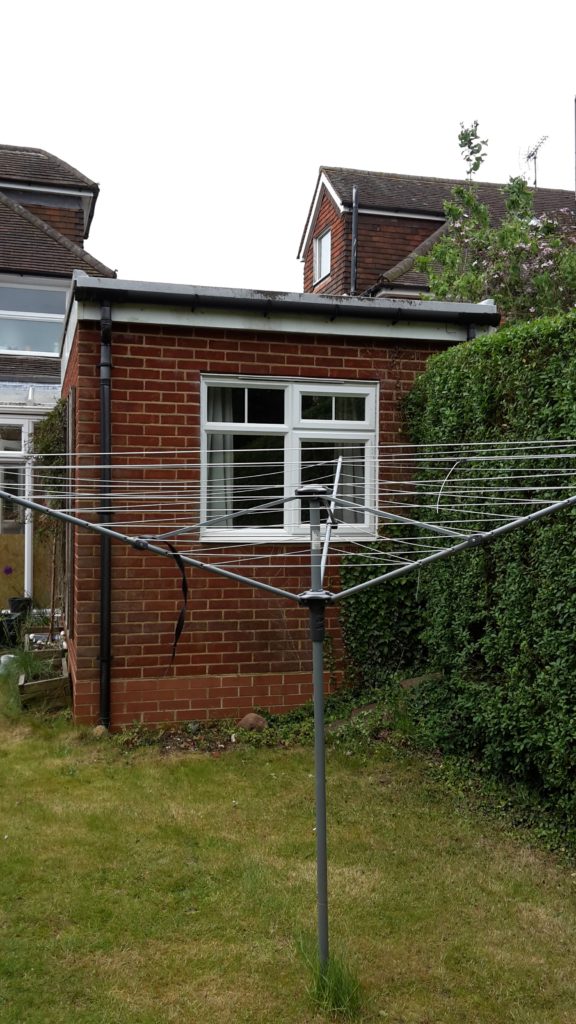
Existing extension to be retained 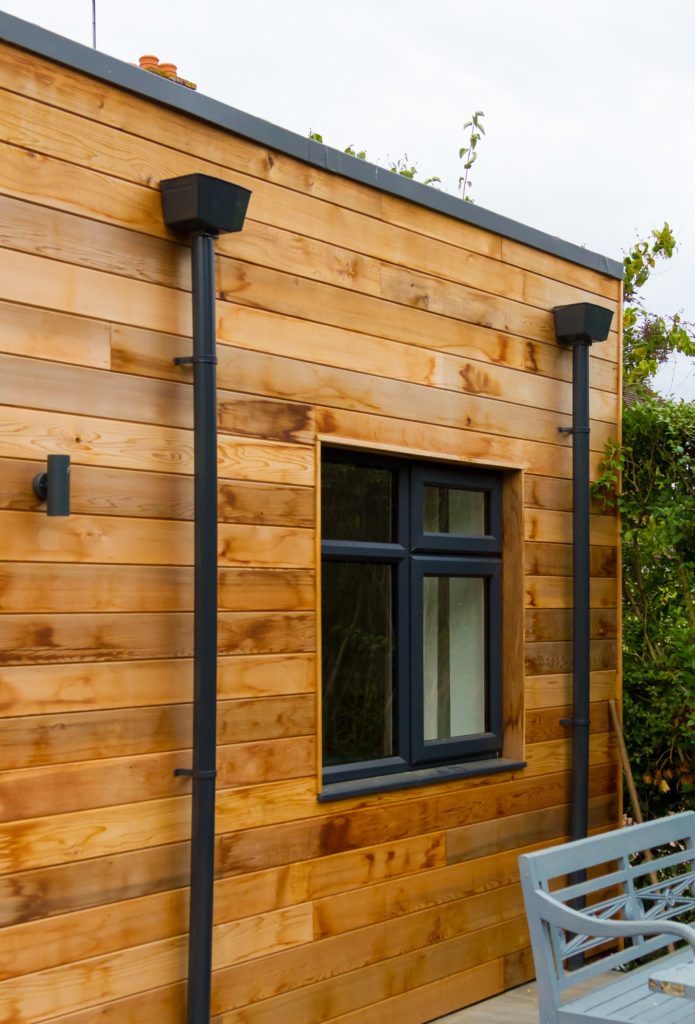
Existing extension overclad to match
Changing family life for the better
Delighted with their new space and restored connection with the garden, the extension offers so much flexibility to a growing family. Opening onto the raised terrace with built in planters along the edge- their dream of indoor-outdoor living is becoming a reality. As is always the case relationships are key to project success and it was a pleasure to facilitate their vision: “we were complete novices to the process but Carly’s personal approach and excellent communication made the daunting job very manageable”.
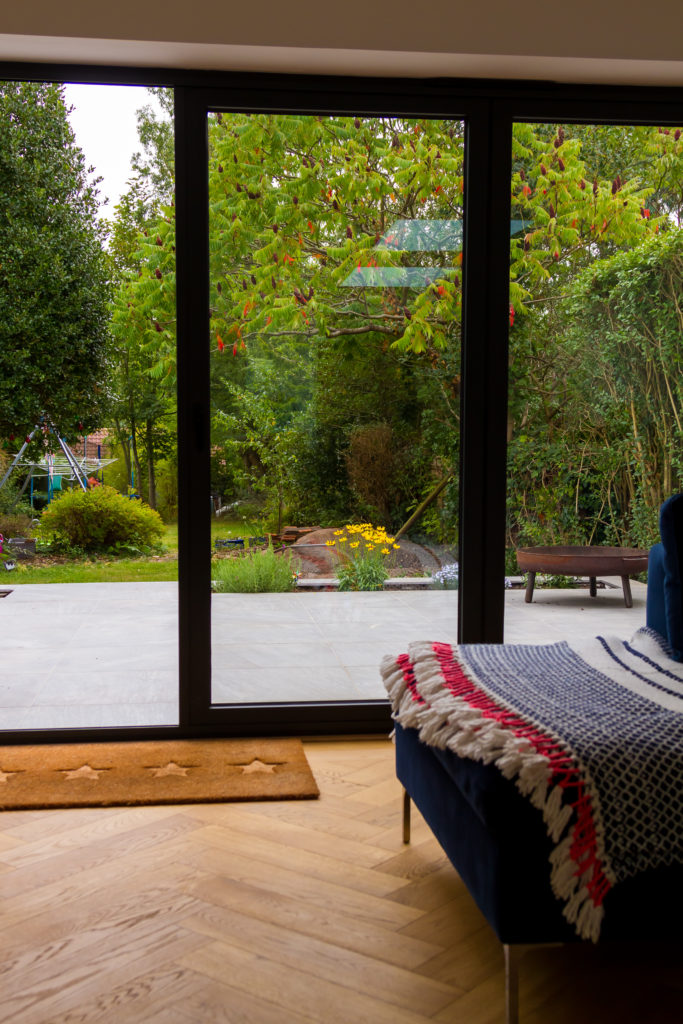
This project was completed in Summer 2019 and built by Macbeth and Co. Building Services.
If you’re feeling inspired to reconnect with your garden then download my Project Planner to start thinking about the problems you’re looking to solve and explore the potential of your home.

